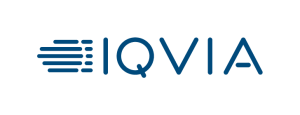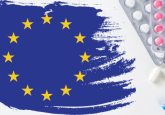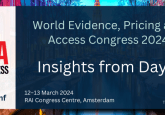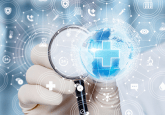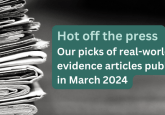RWE in Pharma: 5 minutes with…Tony Gottschalk
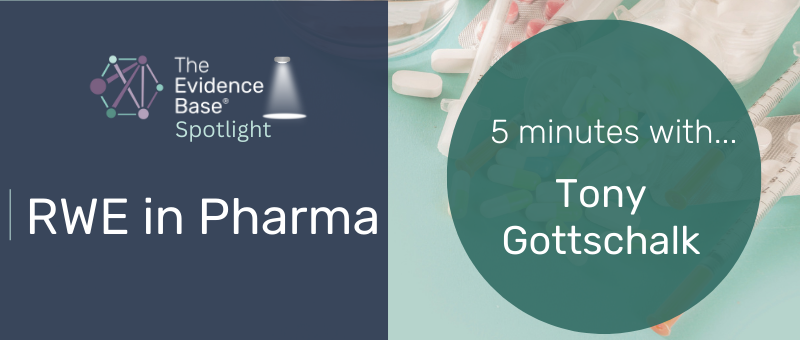
In this ‘RWE in Pharma’ interview series, we are putting various pharma experts in the spotlight and asking them to share their insight on how their industry has traditionally employed real-world evidence (RWE), how they envision this changing over the next few years and what their predictions of the impacts of the highly anticipated US FDA RWE Framework may be.
This instalment features Tony Gottschalk, Senior Principal of Medical Affairs at IQVIA (NC, USA).
 Please could you introduce yourself, your organization(s) and tell us more about your role?
Please could you introduce yourself, your organization(s) and tell us more about your role?
My name is Tony Gottschalk. I have over 20 years of experience in the biopharma industry, and I’ve been with IQVIA for the past two and a half years. Throughout the course of my career, I’ve worked for both pharmaceutical manufacturers and contract research organizations (CROs), managing different aspects of longitudinal patient-level data across a diversity of functional areas including clinical operations, commercial operations, market access, drug safety, regulatory, and health IT. I am currently a senior principal in IQVIA’s Medical Affairs Center of Excellence where I help clients with strategic and operational planning to support their different medical affair functions.
 What are the main ways real-world data (RWD) and RWE have traditionally been – and are currently – used by pharma?
What are the main ways real-world data (RWD) and RWE have traditionally been – and are currently – used by pharma?
Pharma has used RWD for decades to help characterize the safety and effectiveness of drugs and devices in the post-approval setting; other common uses have involved investigating the feasibility of clinical trial design and identifying research sites and patient populations for testing. RWD has also been widely used in health economics and outcomes research to understand the cost of illness and how patients utilize healthcare resources over time.
More recently, RWD has been gaining acceptance for use in external control arms to create comparative cohorts of patients with similar characteristics to the population receiving an investigative therapy. Increasingly, RWE has supported regulatory approval of label extensions for subpopulations of patients when it may not be feasible to conduct a randomized controlled trial (RCT).
Additionally, the types of RWD are expanding beyond healthcare claims and electronic medical record data to include genomic data and patient-generated data from wearables and sensors. These data are being used to generate evidence used for precision medicine, biomarker discovery and to monitor patients remotely for long-term follow up in real world settings.
 Do you think trust in RWE is increasing? What steps need to be taken to build this?
Do you think trust in RWE is increasing? What steps need to be taken to build this?
Yes, trust and acceptance of RWE are definitely increasing. Regulators are now proponents of advancing the field of RWE as a way to augment data from RCTs. Over the last few years, both the FDA and European Medicines Agency (EMA) have developed programs dedicated to studying the use of RWE in regulatory applications. Recently, the FDA has published guidance on how sponsors should consider using RWE in their clinical development programs. This is a clear acknowledgement of the expanding interest and trust in RWE.
Much of the trust in RWE stems from the increased global adoption of electronic health records (EHRs) and improvements in methods and computational technology. This allows us to analyze increasing volumes of patient data to better understand natural history of disease, treatment trends and outcomes.
To continue building on this progress, sponsors need to keep experimenting and pushing their comfort zones with RWE. Relying on the same traditional applications of RWE is necessary, but it may not be sufficient to stay competitive as medicines become more technically complex and pricing pressures continue to mount. The companies that generate the best RWE are finding that they can use these data to increase research and development efficiency, alongside commercial value.
There is still a need for regulatory agencies to develop more data standards, although adoption of the Cures Act Final Rule by the U.S. Office of the National Coordinator of Health Information (ONC) has been a big step forward. In defining a data standard and structure for core data, the Final Rule will vastly improve our ability to extract data from EHR systems that – up until now – have been incompatible. It will take a few years for all systems to be compliant, but eventually this should provide us with greater access to standardized EHRs.
Importantly, the Final Rule also grants patients access to their own healthcare data, making it possible to source data directly from patients. This will not only expand the role of patient groups and patient advocacy groups, but also has the potential to increase the volume of data available for research.
 How do you see pharma’s use of RWD/E changing over the next 5 years?
How do you see pharma’s use of RWD/E changing over the next 5 years?
It’s really starting to get interesting. I believe we’ll see increased adoption of RWE across all phases of the product lifecycle. One area that I’m most excited about is the continued maturation and availability of genomic data linked to patients’ medical records. This will help us to understand how and why diseases develop and optimize patient treatment.
Recent legislation has set an industry-wide effort to standardize the core clinical data that can be extracted from EHRs and to make these data available to all patients through common smartphone applications. Not only does this empower patients by giving them full and convenient access to their own medical records, but it allows patients to share their data with other providers and participate in research studies electronically. Currently, only a small fraction of patients participate in clinical research studies. Legislation, such as the Final Rule, will significantly increase the volume and quality of data available for research, while offering patients the ability to provide and revoke their consent electronically for the use of their deidentified data for research. This is happening now in the USA and Europe is expected to follow in the next several years.
This trend may lead to the development of more gene therapies and regenerative medicine to cure diseases and improve the quality of peoples’ lives at affordable prices.
 How do you think the COVID-19 pandemic has affected this trajectory and view of the value and usability of RWE/RWD?
How do you think the COVID-19 pandemic has affected this trajectory and view of the value and usability of RWE/RWD?
Overall, I think pharma’s public trust profile has improved, thanks to the companies that have successfully developed and delivered the vaccines that have allowed us to get back to near normal in record-setting time. Biopharma companies have long had a public relations issue, where people have viewed companies mostly as profit-seeking organizations. Now individuals are realizing that the pharma industry is of strategic importance to global public health and security. Having seen the value of research in improving global health, I’m hopeful that more patients will participate in clinical trials and contribute their data to research.
 What global implications do you think the US FDA RWE Framework – due to be published later this year – will have on pharma’s use of RWE?
What global implications do you think the US FDA RWE Framework – due to be published later this year – will have on pharma’s use of RWE?
I’m optimistic that the FDA’s new guidance will serve as a model for regulators around the world. The FDA and EMA have been leaders in promoting the use of RWD and in articulating how people should view RWE in terms of its reliability, accuracy and integrity. The FDA can help educate others on the approach to study design and data quality standards that should be used in decision making. The goal has never been to make RWE as strong and unbiased as clinical trial data; RWE is different and can augment RCT data, reduce uncertainty about real world safety and efficacy of products. Ultimately, this is a global movement about increasing the quality and affordability of healthcare. The recent regulatory guidance is an important step in the convergence of data, technology and its appropriate use to improve healthcare.
Disclaimers:
Tony Gottschalk has no disclaimers to declare.
The opinions expressed in this feature are those of the interviewee/author and do not necessarily reflect the views of The Evidence Base® or Future Science Group.
In association with:
